Abstract
1. The rate of active sodium transport across living isolated skins from Rana temporaria was measured when the skins were bulged inwards and outwards by small constant hydrostatic pressure gradients and by pushing them mechanically in the absence of such gradients. The effect of pressure gradients in the absence of bulging was also studied.
2. An apparatus was designed to circulate Ringer solution to each side of the skin at constant temperature, flow and pressure. The pressures were controlled to within 0·5 mm H2O.
3. It was found that bulging the skins in the absence of hydrostatic pressure gradients had no effect on sodium transport but that pressure gradients of less than 5 mm H2O had a marked effect, increasing transport when the pressure was higher on the outside of the skin, and decreasing it when the pressure was higher on the inside.
4. It is concluded that increasing surface area does not influence sodium transport, whereas small hydrostatic pressure gradients have a marked effect.
5. Possible causes for this phenomenon are discussed and its significance is considered with special reference to sodium reabsorption from the proximal tubule of the kidney.
Full text
PDF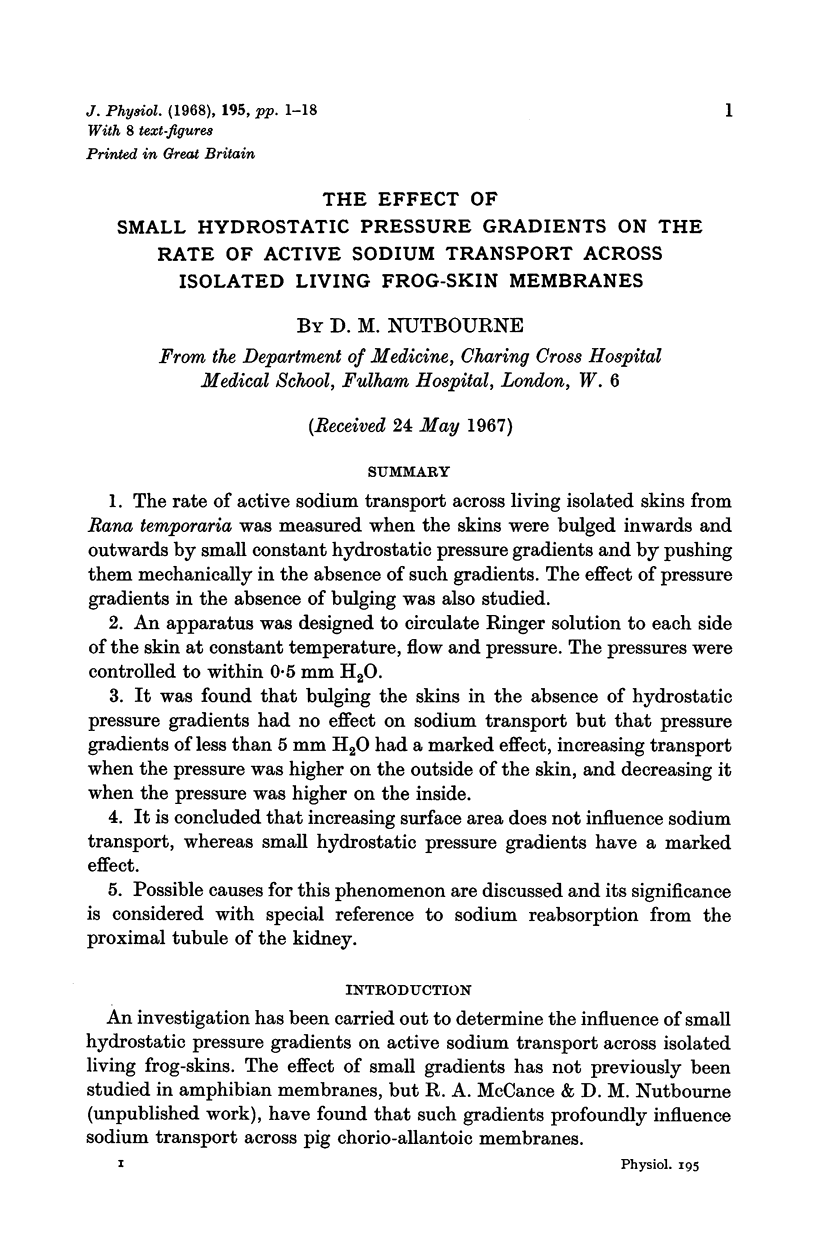
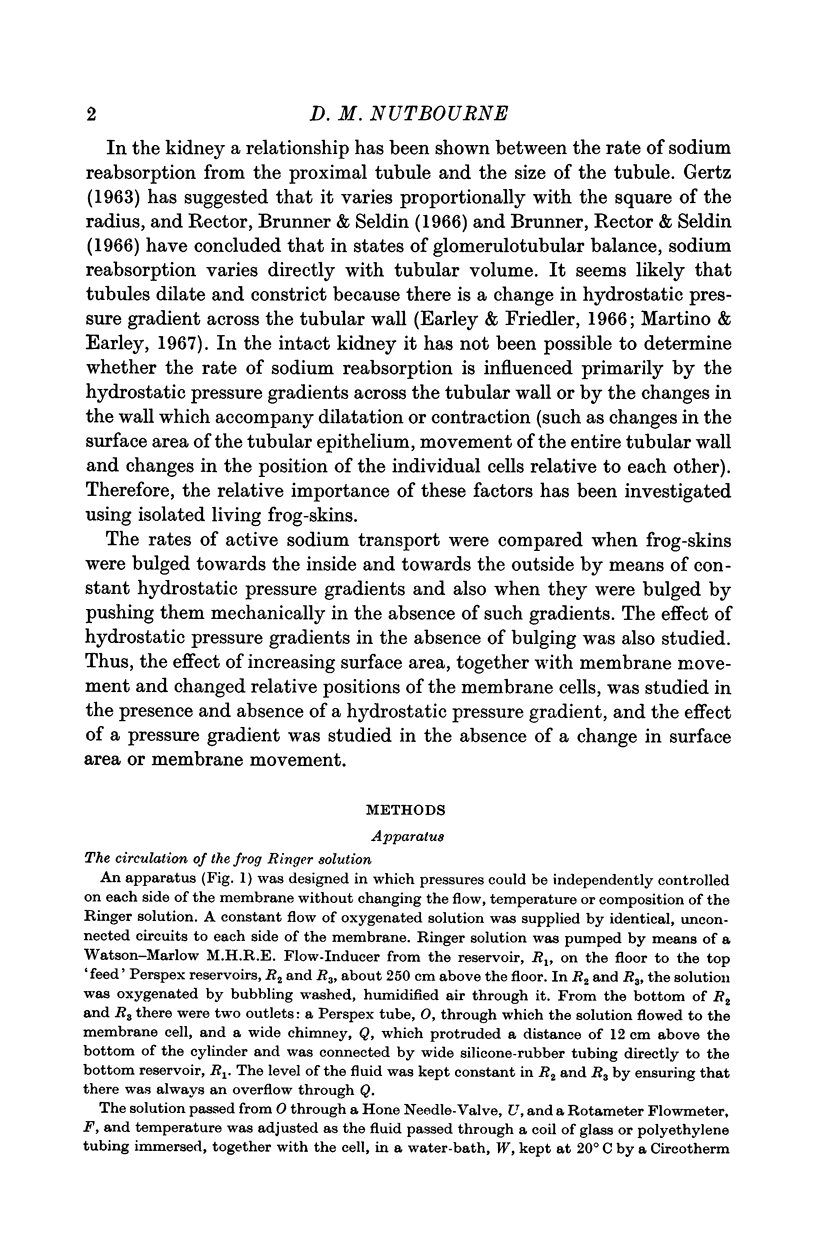
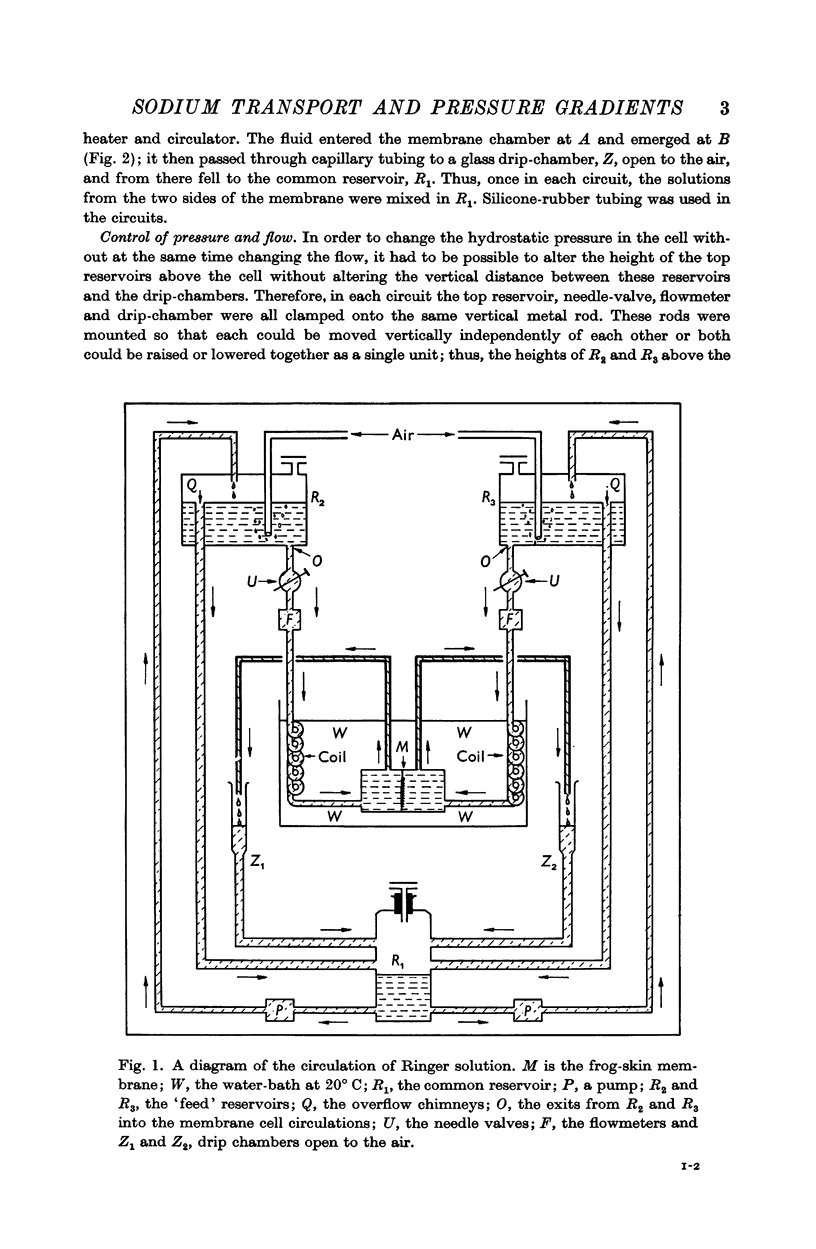
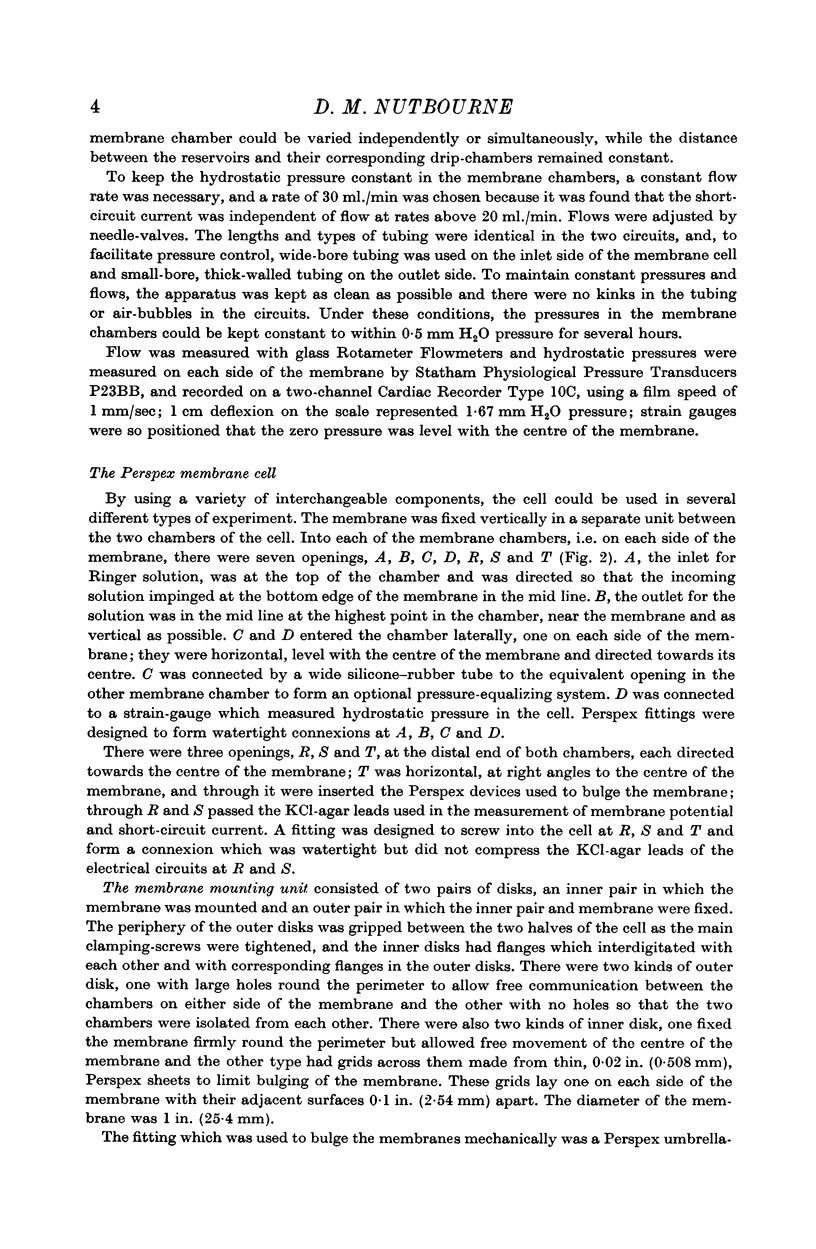
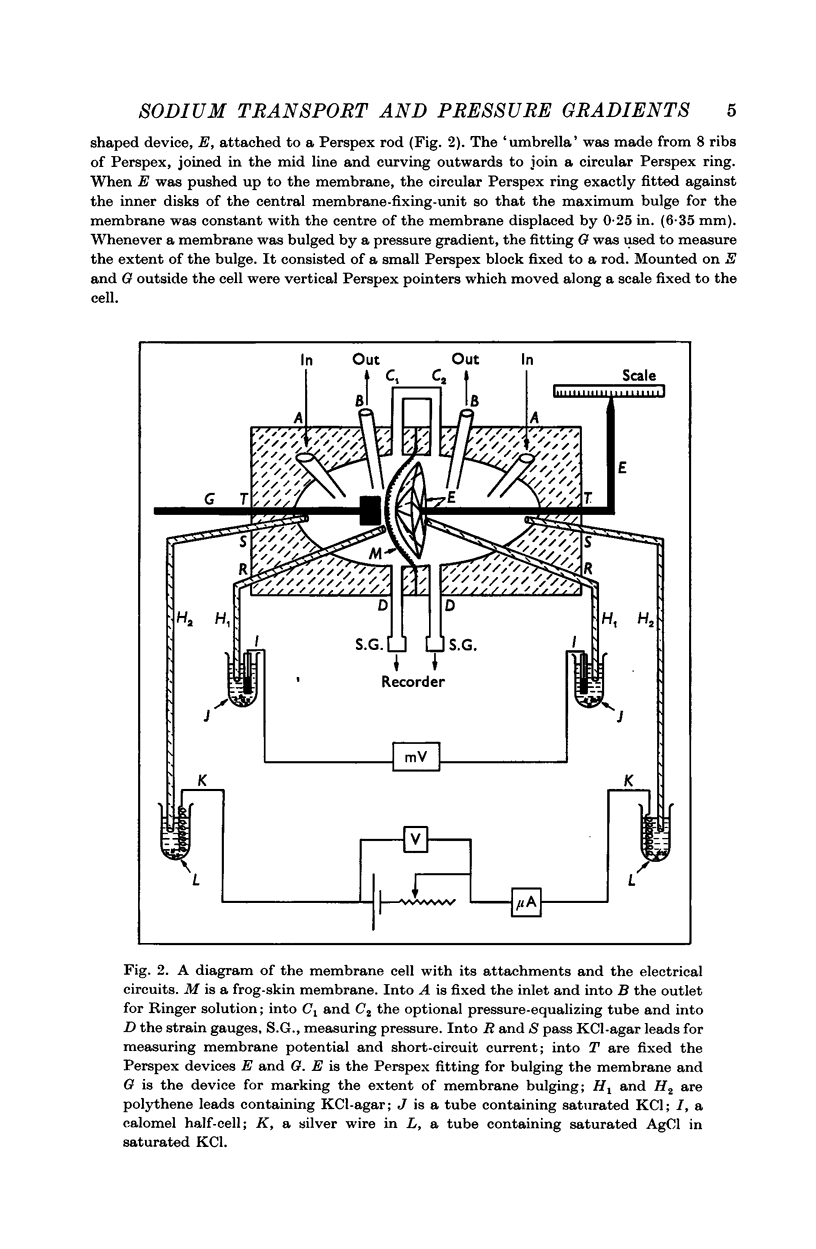

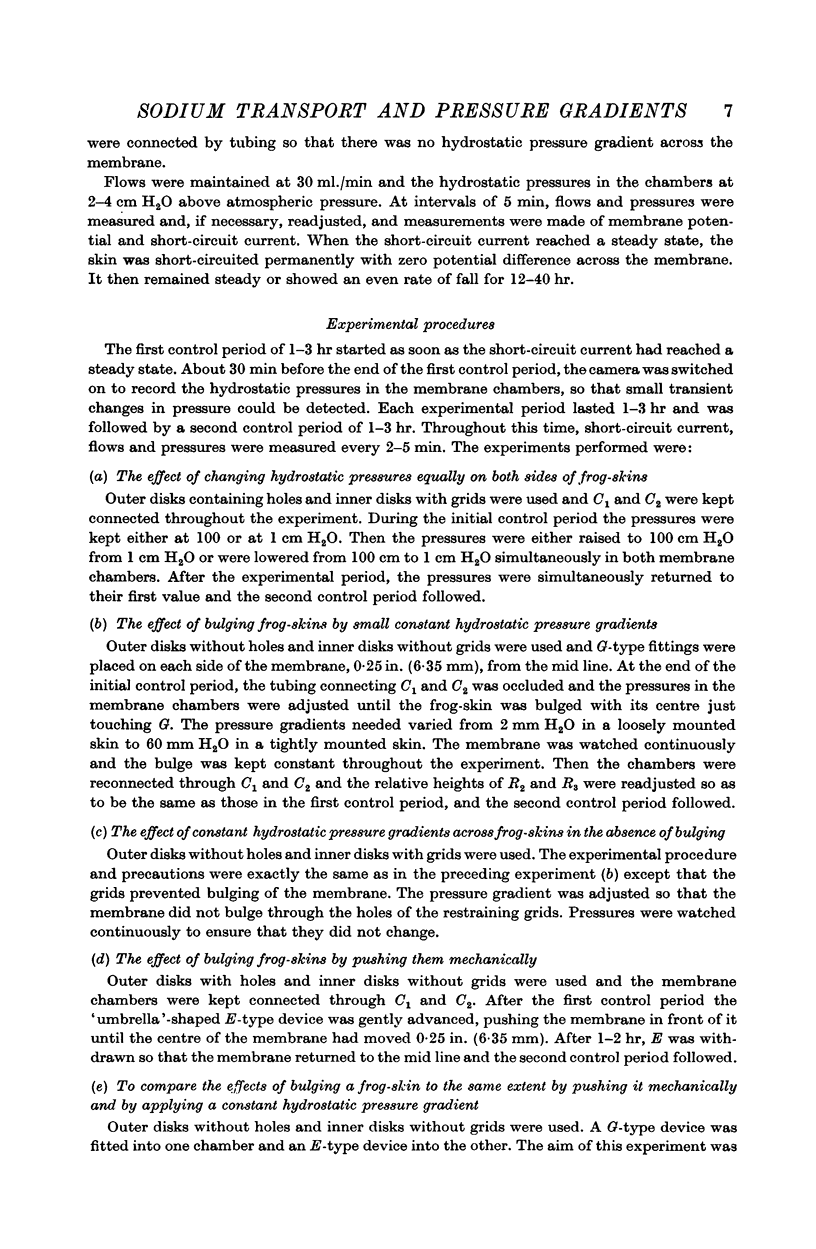
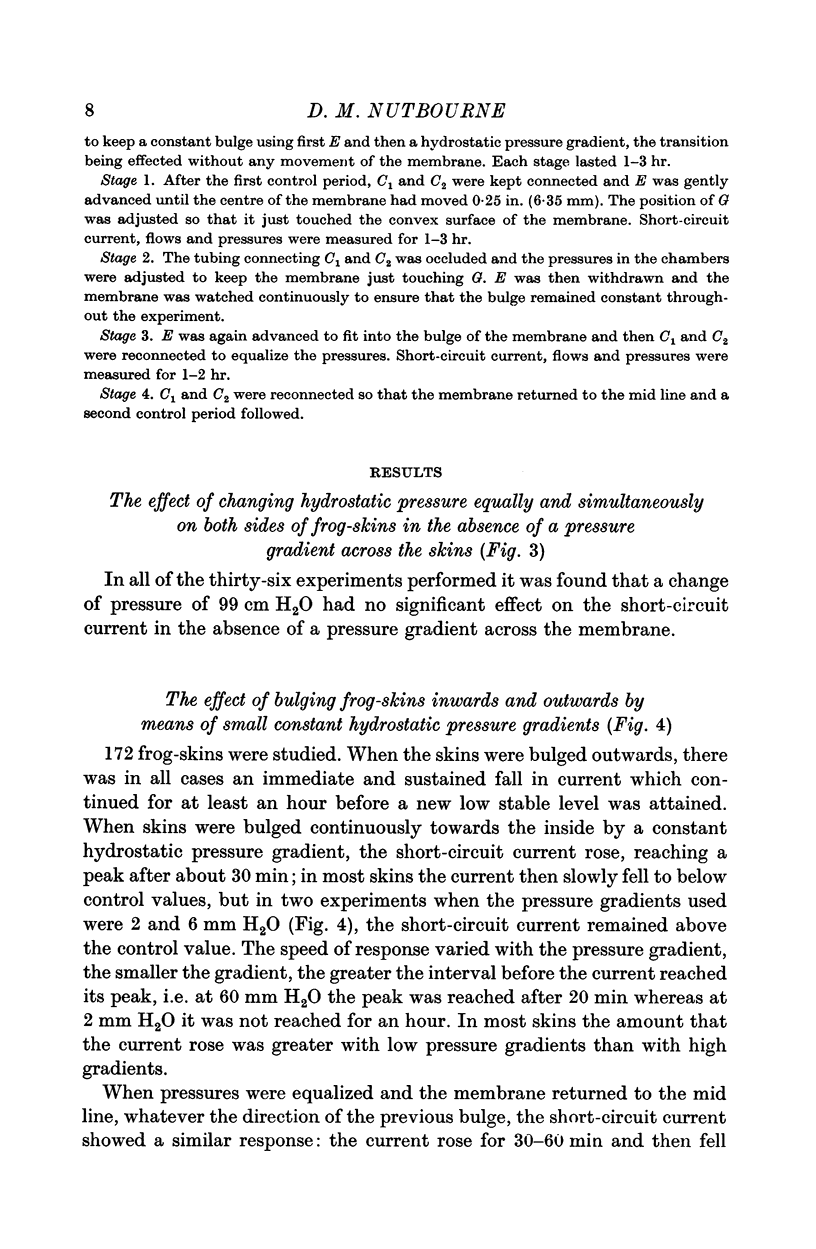
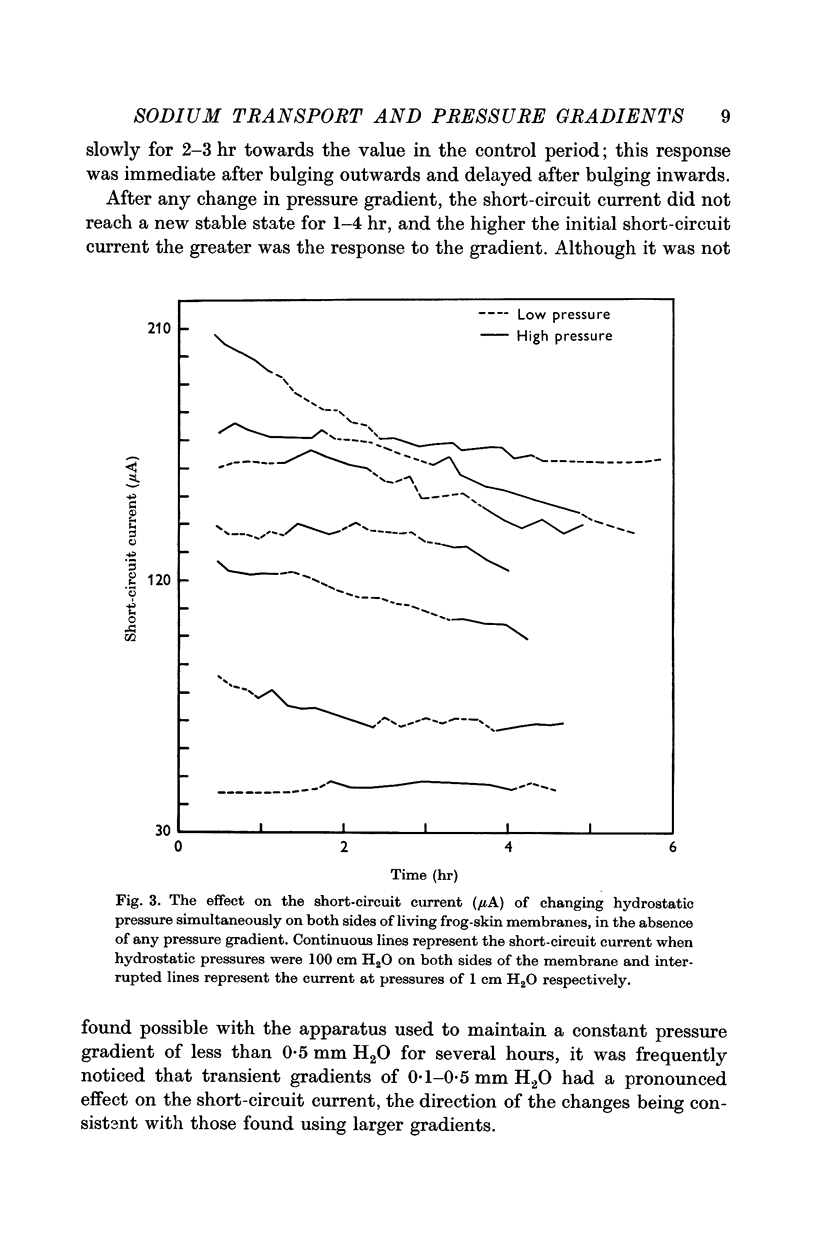
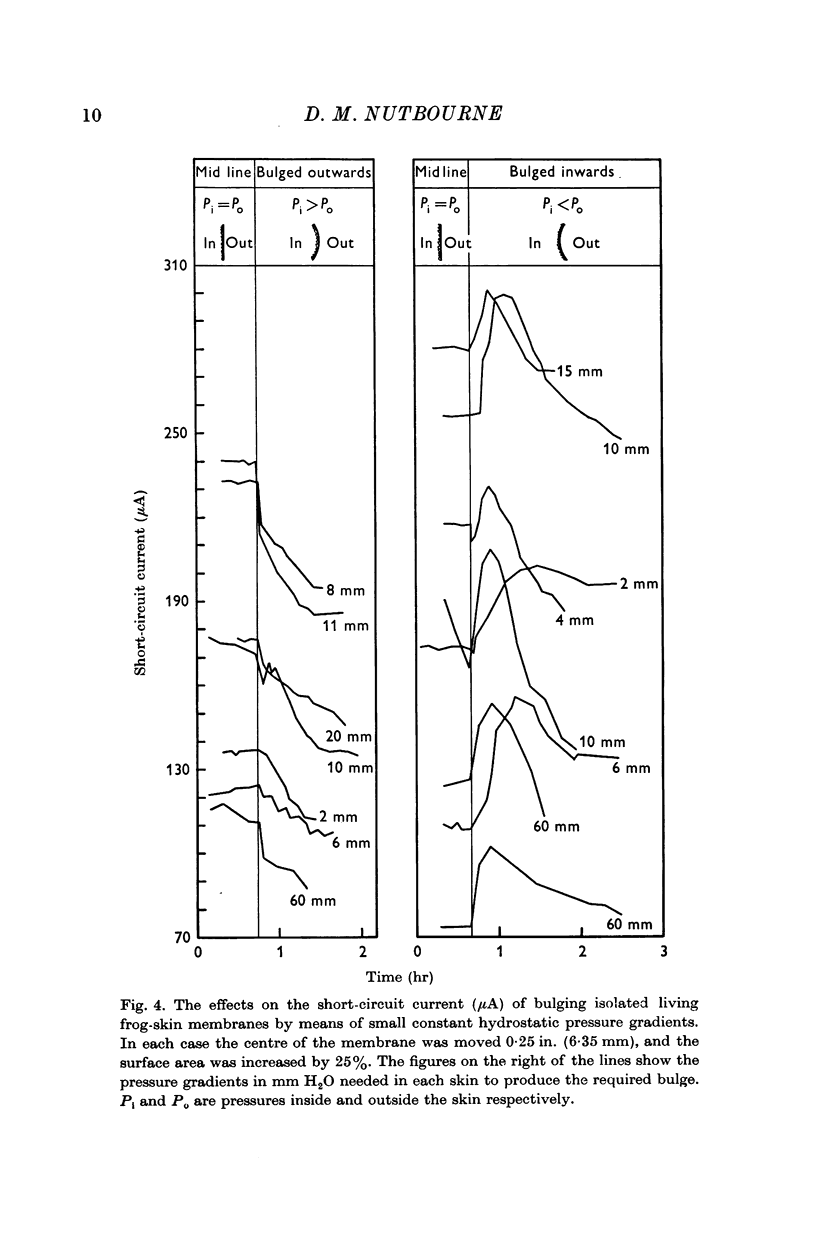
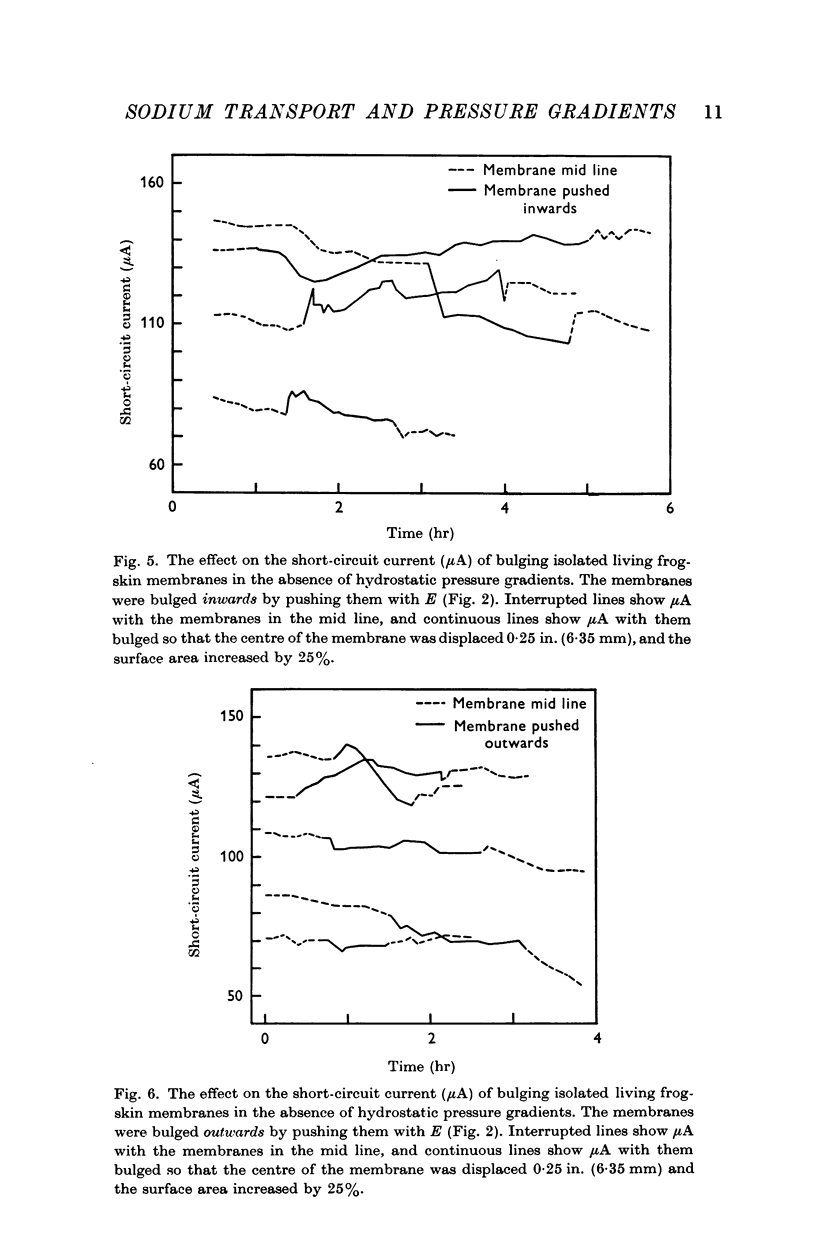
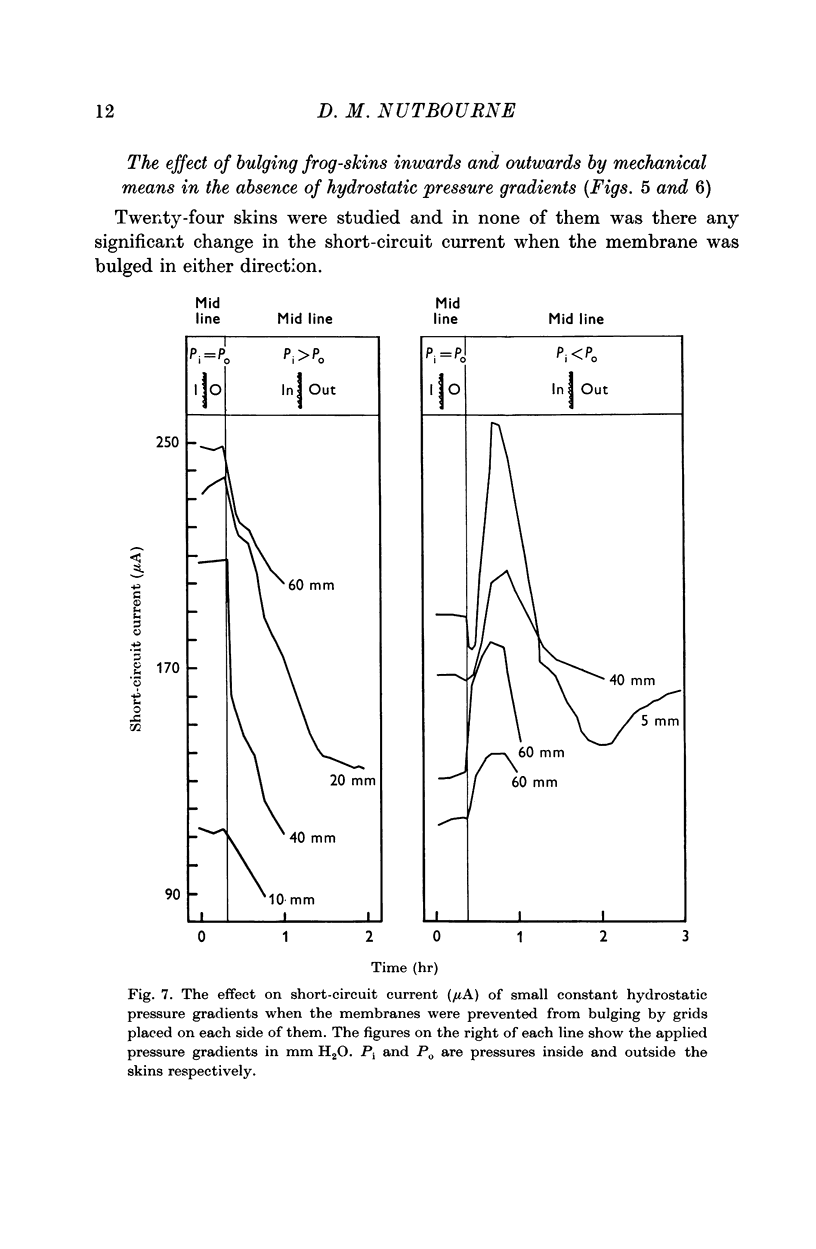
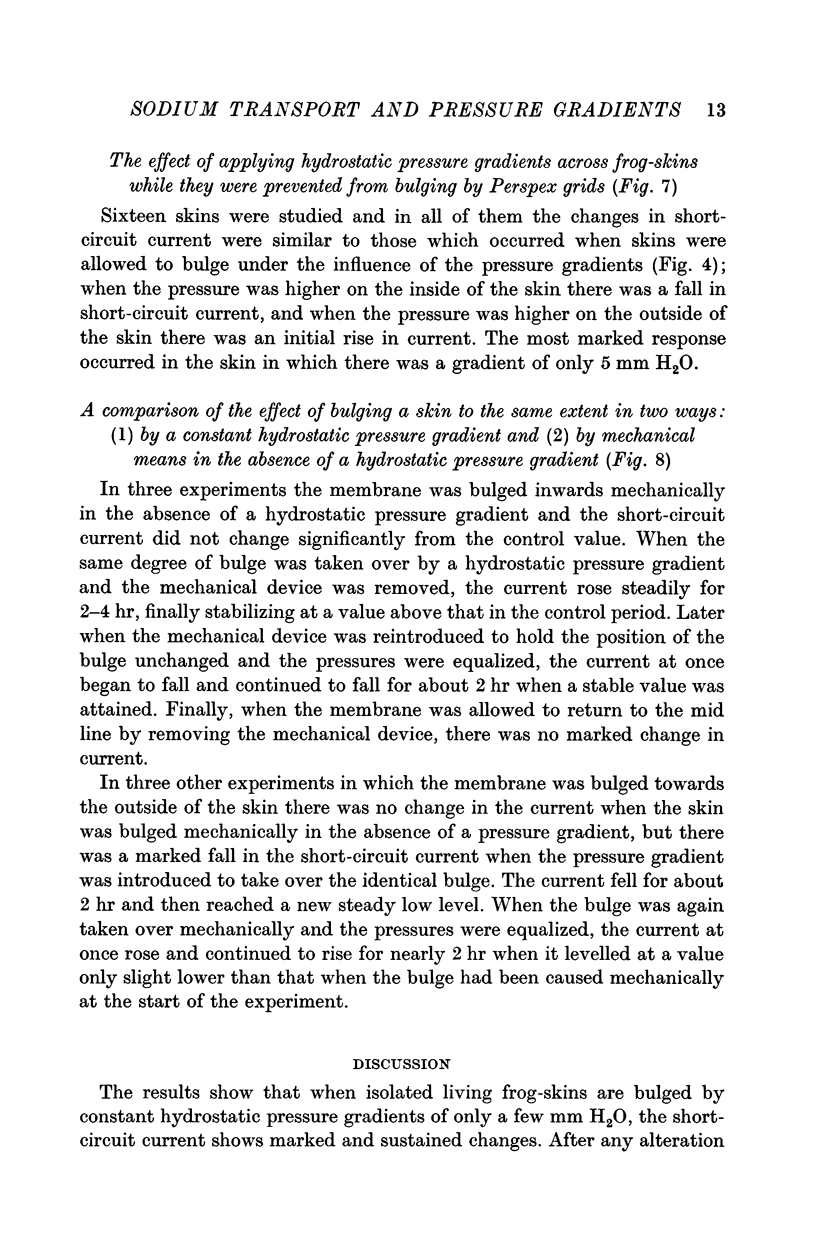
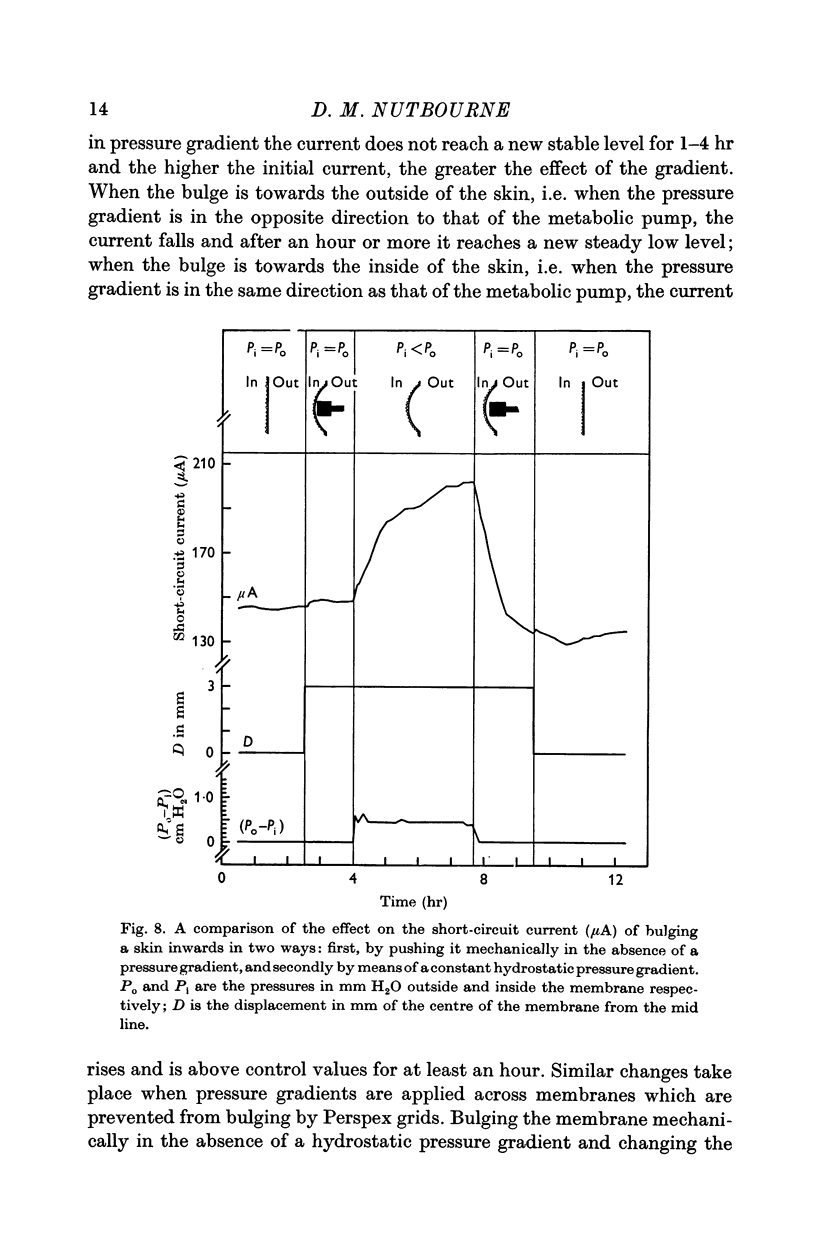
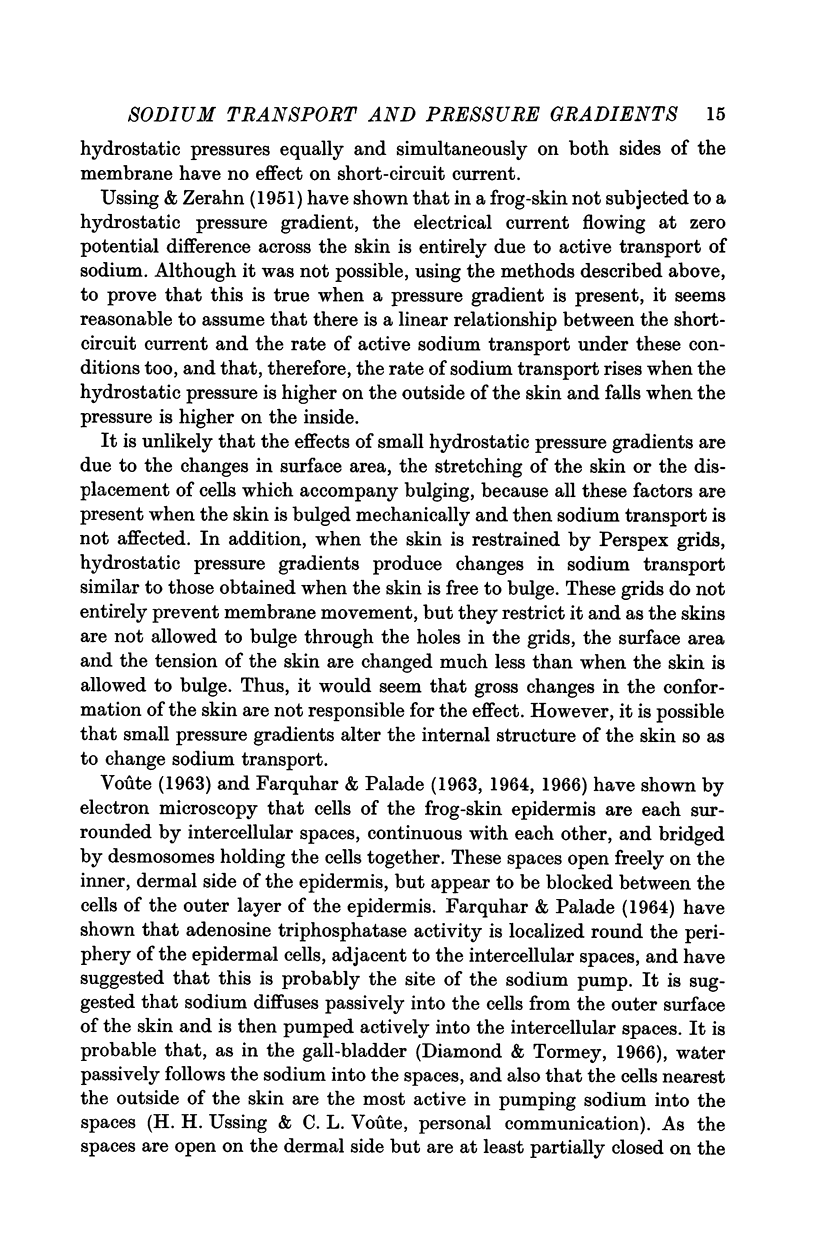
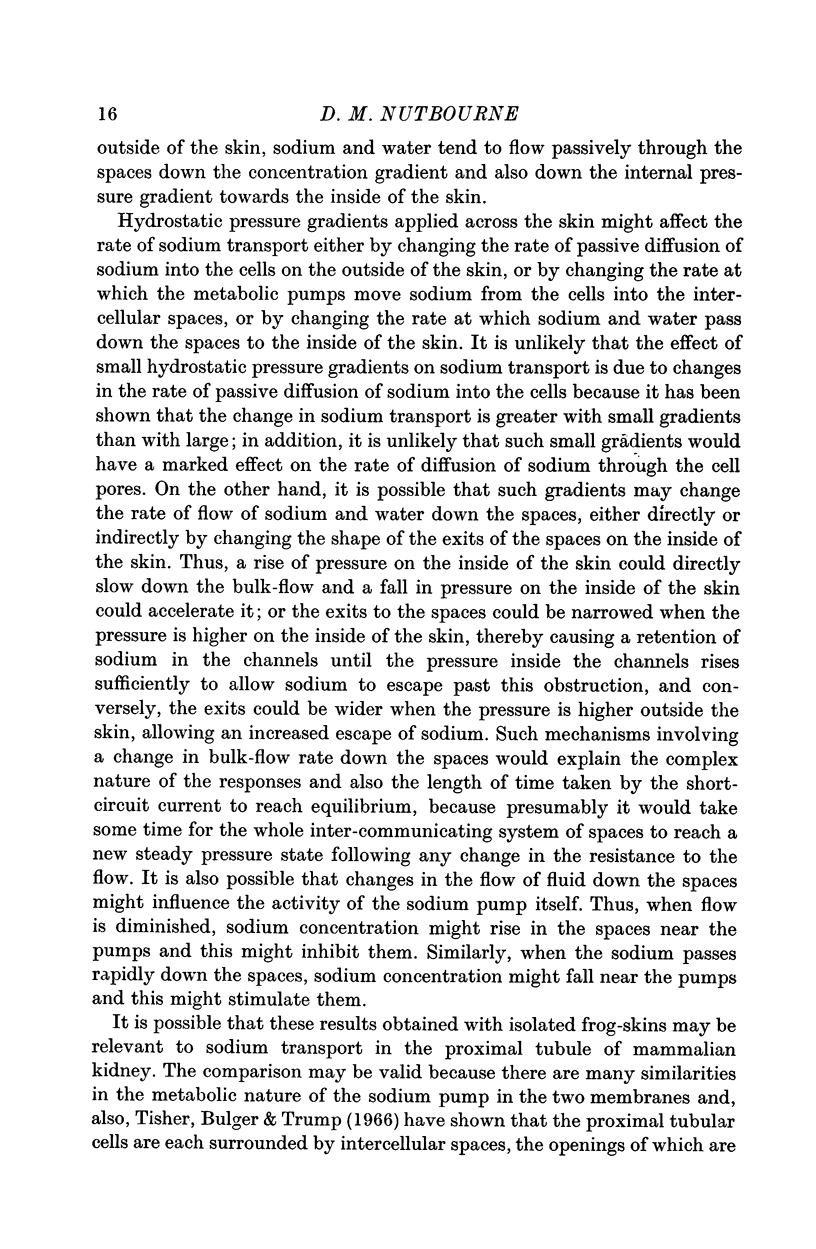
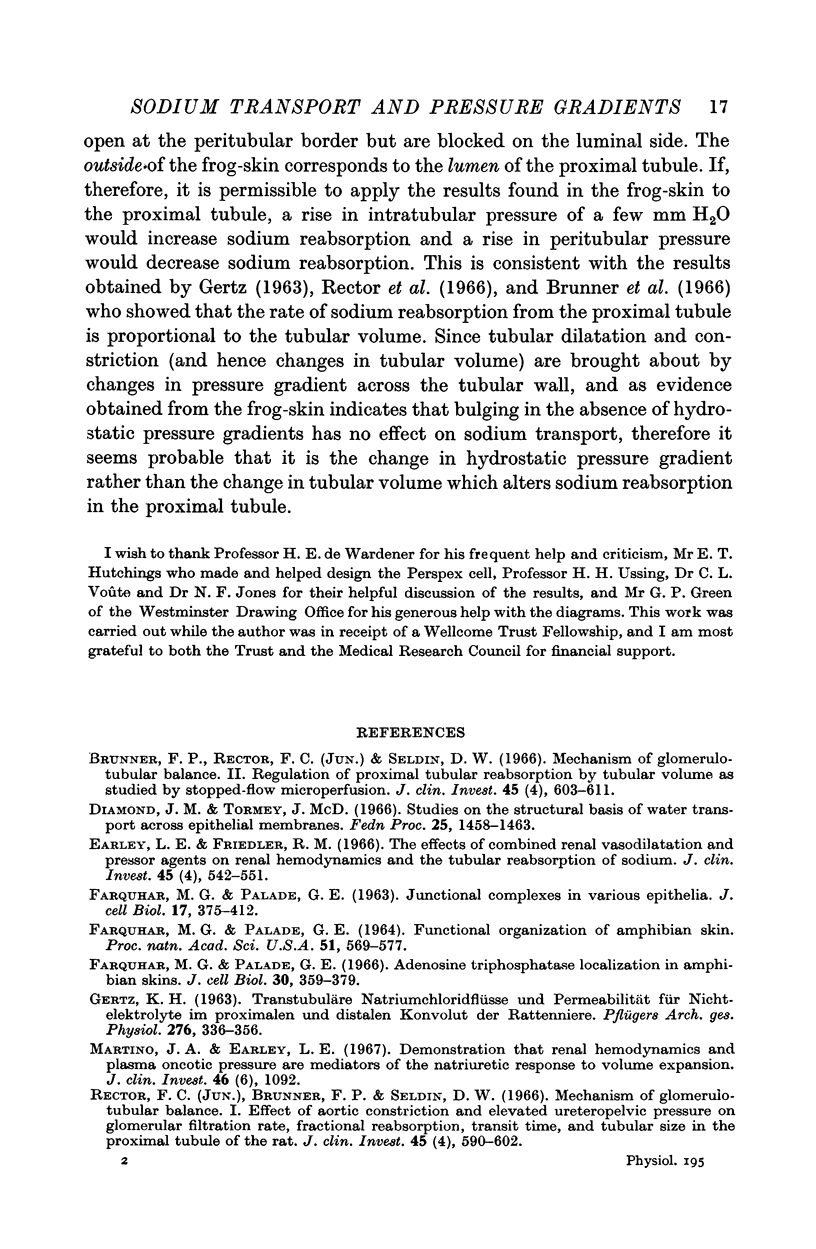
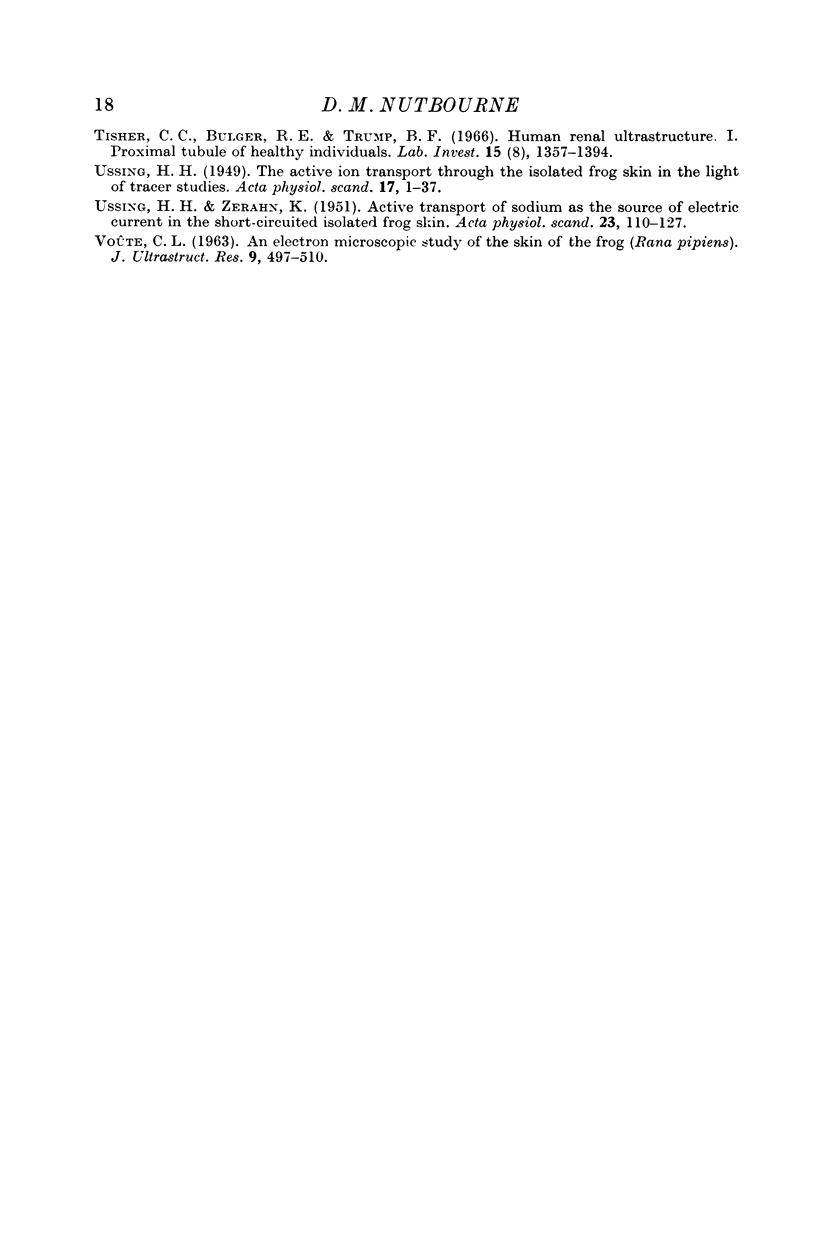
Selected References
These references are in PubMed. This may not be the complete list of references from this article.
- Brunner F. P., Rector F. C., Jr, Seldin D. W. Mechanism of glomerulotubular balance. II. Regulation of proximal tubular reabsorption by tubular volume, as studied by stopped-flow microperfusion. J Clin Invest. 1966 Apr;45(4):603–611. doi: 10.1172/JCI105374. [DOI] [PMC free article] [PubMed] [Google Scholar]
- Diamond J. M., Tormey J. M. Studies on the structural basis of water transport across epithelial membranes. Fed Proc. 1966 Sep-Oct;25(5):1458–1463. [PubMed] [Google Scholar]
- Earley L. E., Friedler R. M. The effects of combined renal vasodilatation and pressor agents on renal hemodynamics and the tubular reabsorption of sodium. J Clin Invest. 1966 Apr;45(4):542–551. doi: 10.1172/JCI105368. [DOI] [PMC free article] [PubMed] [Google Scholar]
- FARQUHAR M. G., PALADE G. E. FUNCTIONAL ORGANIZATION OF AMPHIBIAN SKIN. Proc Natl Acad Sci U S A. 1964 Apr;51:569–577. doi: 10.1073/pnas.51.4.569. [DOI] [PMC free article] [PubMed] [Google Scholar]
- FARQUHAR M. G., PALADE G. E. Junctional complexes in various epithelia. J Cell Biol. 1963 May;17:375–412. doi: 10.1083/jcb.17.2.375. [DOI] [PMC free article] [PubMed] [Google Scholar]
- Farquhar M. G., Palade G. E. Adenosine triphosphatase localization in amphibian epidermis. J Cell Biol. 1966 Aug;30(2):359–379. doi: 10.1083/jcb.30.2.359. [DOI] [PMC free article] [PubMed] [Google Scholar]
- GERTZ K. H. [Transtubular sodium chloride transport and permeability for nonelectrolytes in the proximal and distal convolution of the rat kidney]. Pflugers Arch Gesamte Physiol Menschen Tiere. 1963;276:336–356. [PubMed] [Google Scholar]
- Rector F. C., Jr, Brunner F. P., Seldin D. W. Mechanism of glomerulotubular balance. I. Effect of aortic constriction and elevated ureteropelvic pressure on glomerular filtration rate, fractional reabsorption, transit time, and tubular size in the proximal tubule of the rat. J Clin Invest. 1966 Apr;45(4):590–602. doi: 10.1172/JCI105373. [DOI] [PMC free article] [PubMed] [Google Scholar]
- Tisher C. C., Bulger R. E., Trump B. F. Human renal ultrastructure. I. Proximal tubule of healthy individuals. Lab Invest. 1966 Aug;15(8):1357–1394. [PubMed] [Google Scholar]
- USSING H. H., ZERAHN K. Active transport of sodium as the source of electric current in the short-circuited isolated frog skin. Acta Physiol Scand. 1951 Aug 25;23(2-3):110–127. doi: 10.1111/j.1748-1716.1951.tb00800.x. [DOI] [PubMed] [Google Scholar]


